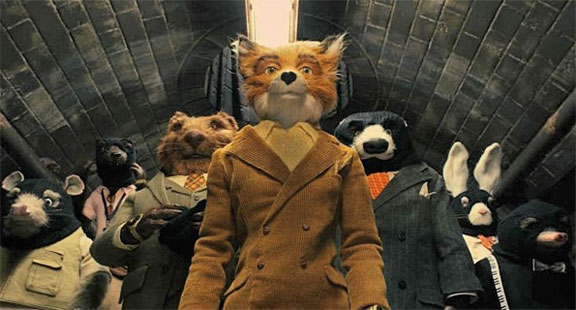One of the gems of 2009 was Wes Anderson’s risky but magical stop-motion animated film FANTASTIC MR. FOX. Shot using several DSLR cameras, the film was made using a combination of new technology and old school know-how. FOX hits stores on Blu-Ray today.
Stop-motion (also called stop-action) has been with us for over 90 years. Stop-motion pioneer Willis O’Brien used the technique in his 1915 silent film THE DINOSAUR AND THE MISSING LINK: A Prehistoric Tragedy. That film has been made available by the Library of Congress on YouTube and part 1 can be viewed by clicking here. Stop-motion was further perfected by Ray Harryhausen in 1960s (with films like JASON AND THE ARGONAUTS). Harryhausen’s process called Dynamation made the action seem more realistic.
While stop-motion has been almost completely replaced by computer animation that is able to overcome some of the limitations of true stop-motion (like fast motion blur), some filmmakers are devoted to the old school methods because they produce a desire look. Anderson’s commitment to the process of stop-motion is one of the reasons why FANTASTIC MR. FOX is so special. Taken from the Roald Dahl children’s book, Anderson was able to craft a screenplay with co-writer Noah Baumbach that was clever and cool making great use of the sweet setting and the eclectic mix of actors. The cast for the film includes long-time Anderson collaborators Bill Murray (who plays Badger) and Jason Schwartzman (as Mr. Fox’ disillusioned son Ash). The leads are George Clooney as Fox and Meryl Streep as his wife. Clooney masters the signature whistle of the Fox character so much so that it became popular around the house with my children.
The making of FOX was a marvel in itself. According to a featurette on the movie, there were over 5000 shots entered in the film and over 620 thousand individual frames were taken. During production they were generating 120 gigabytes of data a day for a total of 18.5 terabytes. At one point, they had 29 or 30 stages shooting at one time. The workflow, if you could call it that, utilized a huge network permitting Director Anderson to direct the film from his flat in Paris or from post-production in England. Something call the Fish-Cam was created named after the system’s creators—Matthew Kitcat and Fish. This system not only permitted individual shots to be sent to Anderson for approval, but there was a live view option for interaction. Anderson even shot video of himself acting out each scene and was able to feed that video into the system from where ever he was when he shot it. The animators then were able to use that video to manipulate the puppets and achieve the desired outcome. This labor-intensive effort paid off, FOX was one of 2009’s best and certainly one of the year’s coolest films.
With the success of FOX, which is bound of make significant sums on the home viewing market, more films using these supped up old school techniques should be made. But as FOX proves, story is just as important as effects. FOX works because every element was carefully crafted and considered. Just having a pretty picture or a gee whiz visual will not win the day.
FANTASTIC MR. FOX is available now on Blu-Ray and other formats.


